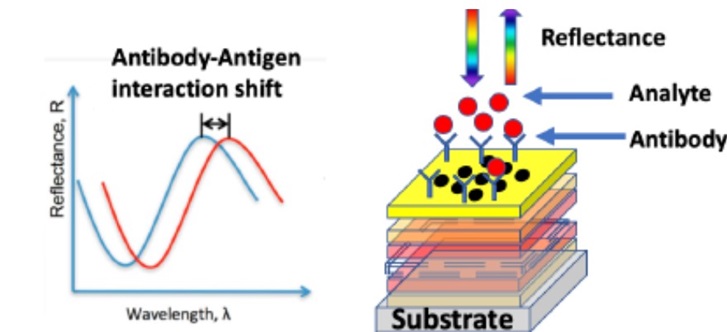
Supervisory institution:
National Science Center
Project manager:
Igor Iatsunskyi, Ph.D, D.Sc.
Budget:
1 708 296,00 PLN
Start date:
02.2021
Duration:
48 months
Contract number:
UMO-2020/37/B/ST5/00576
Hyperbolic metamaterials (HMMs) is a one of new classes of metamaterials - artificial structures with optical properties different to general properties of traditional nanomaterials (negative refractive index, for example). It has rapidly gained a central role in nanophotonics due to facilities of light manipulation in a wide frequency range. This property comes from an excitation of coupled surface plasmons (SPs) in the HMMs. A SP is a collective oscillation of electrons, confined to the surface of a metal in contact with a dielectric, as a thickness of metal and dielectric layers gets lower than 20nm, the metal/dielectric interface is flat, and the metal surface supports propagating surface plasmons (or “surface plasmon polaritons” (SPPs)). HMMs can show both metal and dielectric properties in different directions of light propagation. The effective permittivity tensor ɛii of HMMs is positive along two directions (εxx=εyy>0) and it is negative along the third one (εzz <0). HMMs demonstrate many pronounced physical effects such as the propagation of extremely high-k waves, a broadband singularity in the photonic-density-of-states (PDOS), broadband enhancement of the photonic density of states, negative refraction, super-Planckian black-body radiation, etc.
Development and tailoring of novel nanomaterials for photonic devices such as optical biosensors is an important challenge of modern science and cutting-edge technology due to their superior performance compared to conventional microelectronic devices. Optical biosensors become more
attractive for end-users due to small dimensions, lightweight and portability. Furthermore, optical
devices do not require electric contacts and demonstrate high precision in measurements. The efficiency of nanomaterials mainly originates from the high surface-to-volume ratio. Large surface
area, porosity, topography, morphology and surface functionality improve the sensing properties of the material and strengthen between surface and adsorbate (analyte).
The proposed project is aimed to development of novel multilayered nanostructures based on
Plasmonic material/Metal oxide nanolaminates with tailored properties. As plasmonic components, Al-doped ZnO (AZO) and TiN will be used. The metal oxide components will involve Al2O3 and ZnO nanolayers. Structural, electric and optical properties of the novel multilayered nanostructures will be investigated. Correlation between the main optical parameters (refractive index, extinction coefficient, plasmonic frequency etc.), the composition and/or geometry of fabricated multilayered HMMs will be performed. The surface functionalization will be performed. Then biosensing properties toward cancer biomarkers will be investigated.


